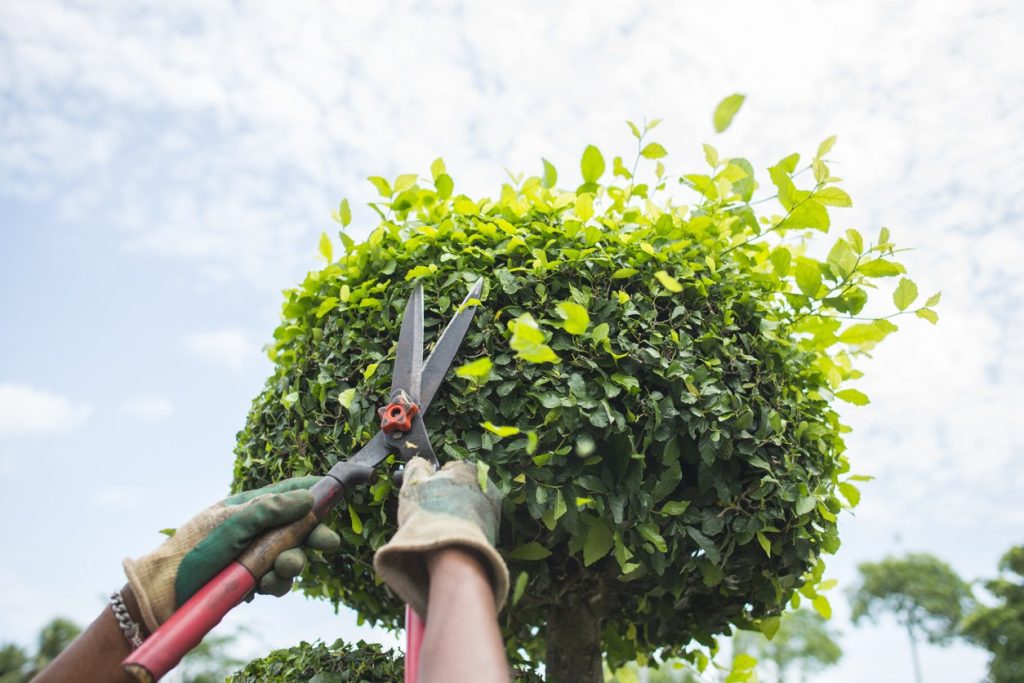
Trees add a lot of color and texture to your landscape, and they also provide important shade. But they can be challenging to maintain because of pests, diseases and other issues that can affect their health.
A few simple things can help you keep your trees healthy and beautiful year after year. Here are a few tips to get you started:
Pruning
Pruning is the process of cutting off branches or parts of a plant to maintain its size and shape and promote growth. It also helps a plant look more attractive by eliminating unwanted parts.
Most trees and plants require regular pruning to keep them healthy and beautiful. It improves the appearance of a garden and adds to your property’s curb appeal.
To prune properly, you must decide what to keep and what to cut based on health, shape, and growth pattern. You should also consider your personal preferences.
Removing dead and damaged limbs encourages fruit production on the tree. This also makes the tree less vulnerable to diseases, which can make it sicker or die.
A key factor to remember when pruning is that it should not remove more than 30% of a tree’s live foliage at one time. Removing too much live foliage can stunt a tree’s development and reduce its ability to bear fruit.
Watering
One of the most important things you can do for your trees is to keep them adequately watered. Not only does this help them survive, but it also adds to the beauty of your property and can increase its value.
The amount of water a tree needs depends on the site, climate and type of plant. Newly planted trees (those that have been in the ground for less than two years) require more frequent watering as they are still growing their roots and cannot absorb enough moisture on their own.
Established trees should be watered once a week during periods of dry weather. This helps to protect them from drought and heat stress. Evergreens are particularly susceptible to drought, as they lose their needles at a much faster rate than they can absorb water.
Fertilizing
Fertilizer is a critical step in keeping your trees healthy and beautiful. All plants, including fruit trees, require a number of essential minerals (macros), such as nitrogen, phosphorus and potassium.
Nitrogen promotes foliage growth; phosphorus triggers root growth. Both nutrients are needed in balanced amounts to produce a good crop.
To determine the appropriate amount of fertilizer for your soil, have a soil test performed through your local Clemson Extension Service. The results will give you a good idea of the nutrients your trees and shrubs need and whether your soil has adequate levels of each.
Broadcast granular fertilizers evenly over the entire root zone area using a cyclone or drop-type spreader. Apply one-half of the total amount in a single direction and the other half in a perpendicular direction for maximum coverage.
Fertilization
Fertilizing trees can be a critical part of maintaining their health and appearance. Trees need a variety of nutrients in order to survive and thrive, and they also need supplemental fertilization in the spring and fall, when they’re dormant.
A well-fed tree is one that is strong and healthy, with green foliage and thick branches. It is also less likely to be attacked by insects and diseases.
Most woody plants begin their new growth with stored elements from the previous year, but it is important to apply a fertilizer that contains all of the nutrients a plant needs for healthy, vigorous growth. This fertilizer should be in a form that is easy for a plant to absorb, such as granular or liquid.
The best time to fertilize your trees is in the spring after new growth begins and before cold weather sets in. This will provide a boost to their new growth, which will be stronger and more resilient than growth that hasn’t received fertilizer.
Insect Control
Insect control is one of the most important steps in keeping your trees healthy and beautiful. Pests can quickly become a big problem when their numbers get out of hand.
There are many ways to keep insects at bay without using harmful chemicals. These methods include natural pest control, biological management and chemical control.
Biological management involves the use of predators, parasitoids, or disease organisms that normally occur in nature to reduce pest populations. These techniques are usually effective against specific pest groups and can be an important part of overall pest management.
Natural insecticides can be made from essential oils, such as peppermint oil, citronella, or citrus. They are less toxic than commercial sprays, but should be used with caution. Read and follow the label carefully and use only as much as is necessary for your particular situation.